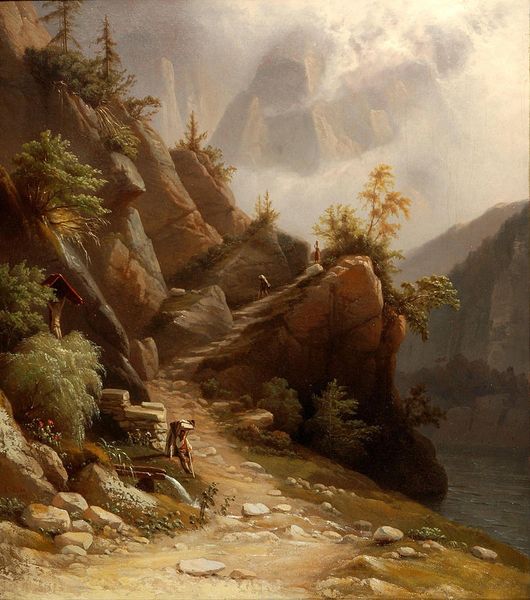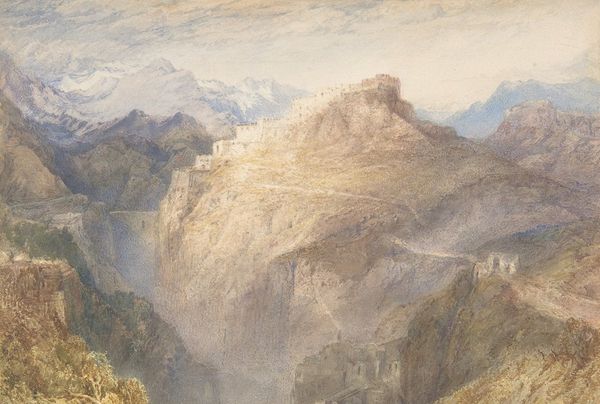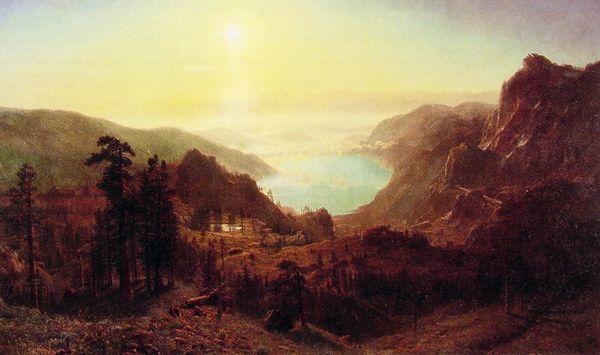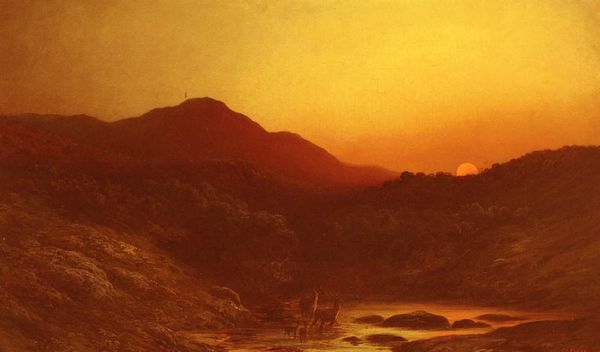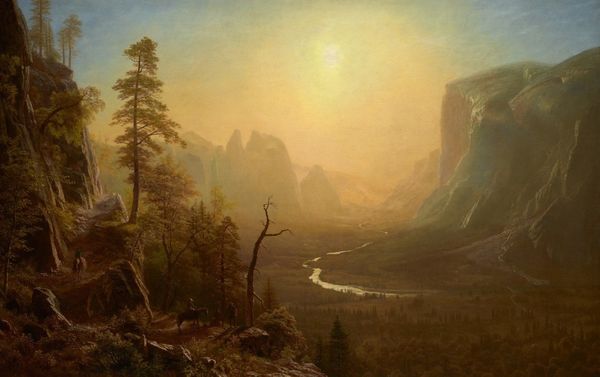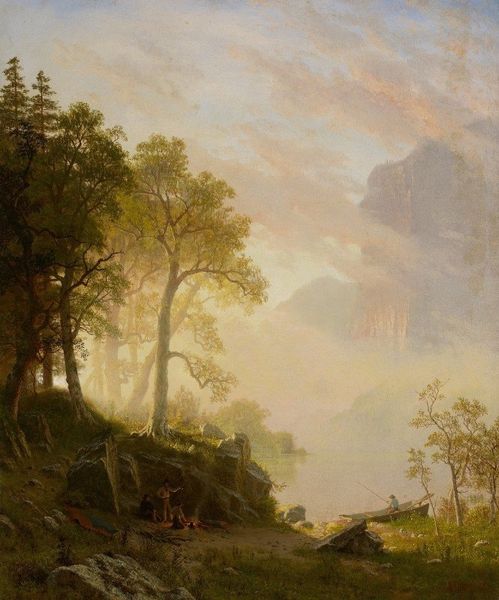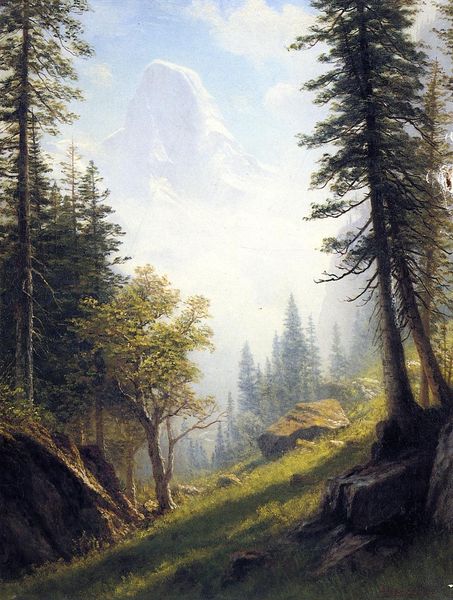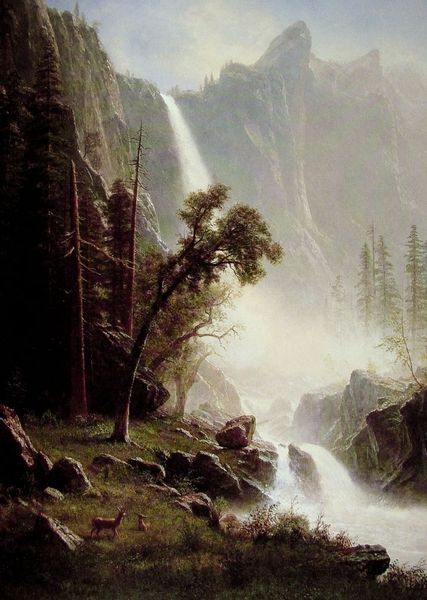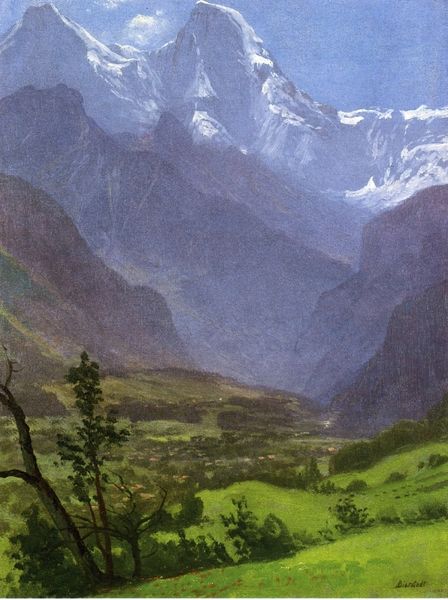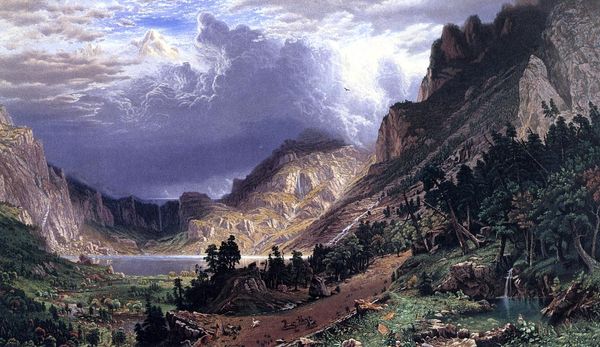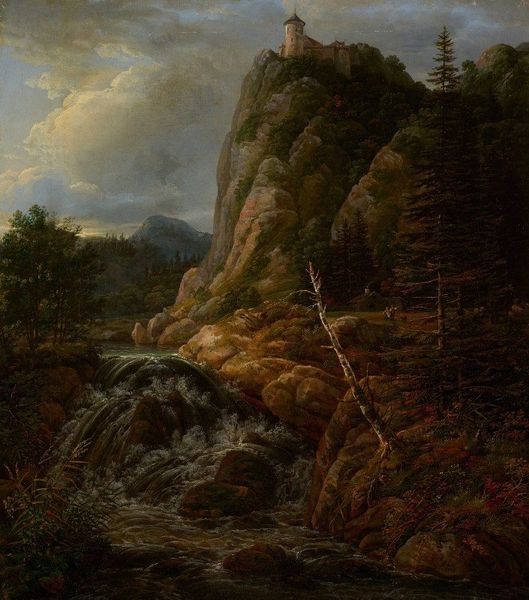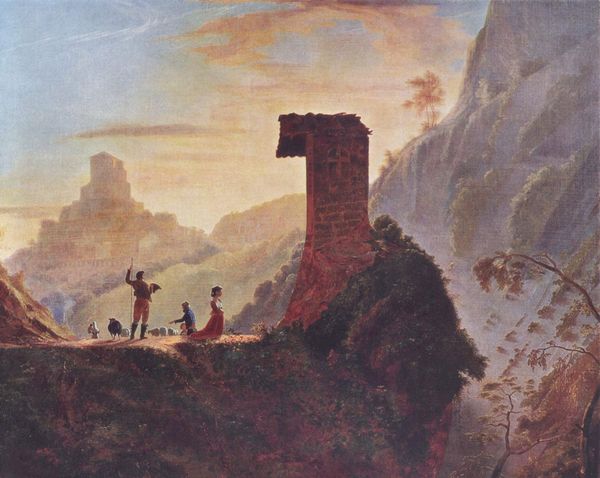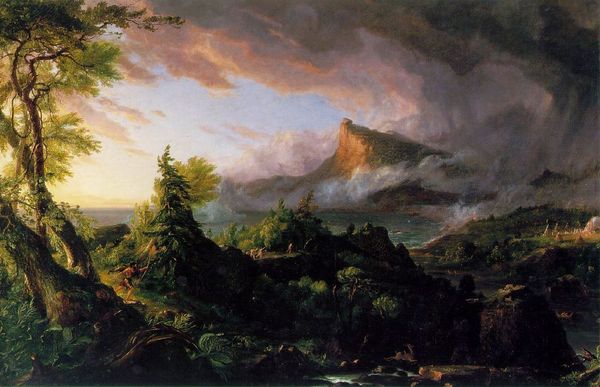
Dimensions: 74.3 x 55.6 cm
Copyright: Public domain
Curator: Here we have Albert Bierstadt's "View of Donner Lake, California," painted in 1872. What are your initial impressions? Editor: A rather golden, hazy view. There’s a real density of oil paint used to conjure this light; you can practically feel the texture of the brushstrokes mimicking the rugged landscape. It definitely romanticizes the westward expansion, but what about the materials? What kind of canvas did he use? Was he grinding his own pigments here, or using materials commercially available for the taking? Curator: That’s a great point about material access influencing even idealized landscapes. This piece is exemplary of the Hudson River School tradition, reflecting the American ideology of Manifest Destiny through romanticized depictions of the West. I imagine he wanted the light and textures of nature in the West on a museum wall in the East to create a type of fabricated memory and national dream. Editor: Yes, Bierstadt really knew how to control the visual narrative of Western expansion by showing only the aesthetic parts of westward settlement, leaving out the displacement of indigenous people, resource depletion, or the realities of industrializing nature. We also need to ask whether plein-air was more for sketching or were works such as this one constructed primarily in situ? How do artistic practices mirror extraction from the land itself? Curator: He certainly understood how to manufacture and project an idea through imagery! His artistic license allowed for landscapes more dramatic than reality, attracting tourists and promoting settlement of the American West by visually excluding some inhabitants while simultaneously including future populations via aesthetic engagement. It’s a gorgeous example of landscape painting serving political goals. Editor: Agreed. While lovely to look at, "View of Donner Lake, California" raises questions of accessibility and availability within material economies; for both the artist accessing painting tools and pioneers engaging in resource utilization that would affect generations following—art for empire building if you will! Curator: The politics of visual space continue, in some ways, today. Something to consider as we navigate our modern landscapes. Editor: Precisely, every stroke matters in constructing perceptions and prompting important reflections upon land, resources and power!
Comments
No comments
Be the first to comment and join the conversation on the ultimate creative platform.
